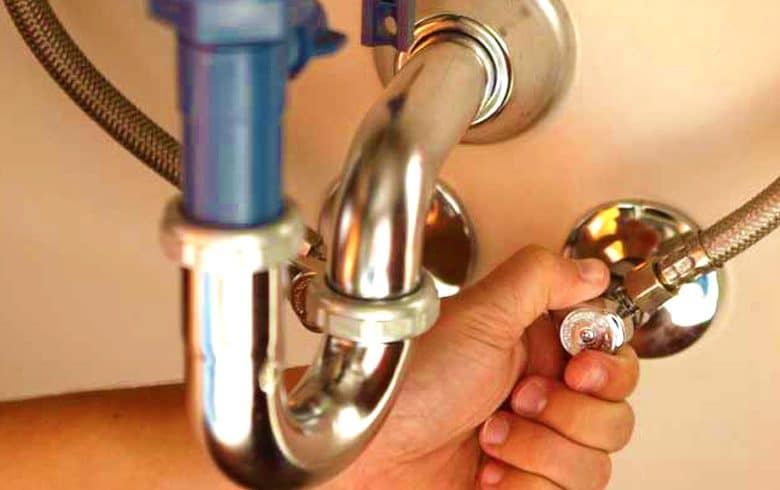A plumbing problem can be a stressful situation for many people. While some experienced weekend handymen or women may know what to do, many people start to panic the moment a plumbing emergency arises. Fortunately many plumbing problems are preventable by taking the proper precautions. We’ve put together some plumbing tips that will help you prevent plumbing problems and also help you when you find yourself in the middle of a plumbing emergency.
Learn Where Your Water Shutoff Valves Are
One of the biggest plumbing tips, is to be able to locate your water shutoff valves. During a plumbing emergency one of the fist things you will want to do is shut off the water supply. This helps prevent water waste, excess mess, and damage. Depending on the severity of the situation you may need to either shut off the localized water supply, say to the toilet, or you may need to shut off the water supply to the entire house. For localized leaks, the water supply valve is usually located behind the toilet, under the sink, or behind the water using appliance. The main water supply shutoff valve can be located inside or outside. It will usually be located near the foundation of your home, or in a pit in the yard. If you are unsure where your main water supply shutoff valve is located, contact your local water municipality.

Stop A Toilet From Overflowing
An overflowing toilet is one of the most stressful plumbing situations. It is usually when something that wasn’t supposed to be flushed, finds itself lodged in the drain. When this happens the toilet cannot properly drain which causes it to overflow. Knowing how to stop an overflowing toilet is a very useful plumbing tip that everyone should know. If you ever find yourself in this situation, you want to prevent the water from the tank to continue to fill up the bowl. To do this, open the tank and close the flapper. Hold it down until the water starts to fill up in the tank. Once the water has stopped, you can deal with the clog.
Have The Right Plunger On Hand
First of all, everyone should own a plunger. It is just a good plumbing tool to have on hand in the event of a plumbing emergency. Did you know that there are several different kinds of plungers? The two most common types of plungers are the cup plunger, which looks exactly like a cup and a flange plunger, which has a cup and a lip. Cup plungers are designed for flat drains like sinks and bathtubs, while flange plungers are designed for found drains like toilets. It is really important to make sure you are using the right kind of plunger for the job to insure proper suction. We suggest having one of each, one dedicated to sink drains, the other for toilets. This makes sure you are properly prepared, and is good for sanitation purposes.

Watch What Goes Down The Drain
We cannot stress this enough. Many plumbing problems are caused from improper use of drains. If you keep certain items out of your drain, the likelihood of forming clogs decreases significantly. The following should never go down to drain or get flushed:
- Bones
- Large Food Particles
- Fibrous Food Scraps
- Plastic
- Paper (other than toilet paper)
- Diapers
- Wipes
- Feminine Hygiene Products
- Q-Tips
- Dental Floss
- Hair
- Chemicals
- Prescriptions Medication
By taking care of your drains you can prevent future plumbing problems and also protect the environment. Remember, everything that goes down the drain could potentially reach our rivers, lakes, streams, and oceans.
Got a plumbing emergency? Lesco Plumbing is here to help! For more plumbing tips or to schedule your appointment contact Lesco Plumbing, Heating, and Cooling today!
Related Articles







